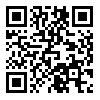<>
Volume 6, Issue 3 (8-2023)
JSAL 2023, 6(3): 85-113 |
Back to browse issues page
Download citation:
BibTeX | RIS | EndNote | Medlars | ProCite | Reference Manager | RefWorks
Send citation to:



BibTeX | RIS | EndNote | Medlars | ProCite | Reference Manager | RefWorks
Send citation to:
Moqadasi nia M, Rashid Ali Al-Agha A. (2023). Studying the “Love in the Time of Corona” Social- Orientated Collection of Poem by “Muhammad Ghazavi” [In Arabic]. JSAL. 6(3), 85-113. doi:10.61186/jsal.6.3.85
URL: http://jsal.ierf.ir/article-1-94-en.html
URL: http://jsal.ierf.ir/article-1-94-en.html
1- Associate Professor, Department of Arabic Language and Literature, College of Arts and Humanities, Qom University, Iran , mammahdi@yahoo.com
2- MA in the Department of Arabic Language and Literature, College of Arts and Human Sciences, University of Qom, Iran
2- MA in the Department of Arabic Language and Literature, College of Arts and Human Sciences, University of Qom, Iran
Abstract: (2888 Views)
The contemporary poem plays a special role given to society's atmosphere to express social themes to empower the spirit of cooperation and sympathy. The poem is not a phenomenon unique to the poet but social issues are important factors to create a poem, as the poet understands the spirit of his people's age and knows their happiness and grief. Investigating the poet's social commitment is one of the main pillars of studying literature sociology. We studied the social issues of Muhammad Ghazavi's collection of poems, which is published in concurrence with corona prevalence in 2020 and during corona epidemics crisis as “Love in the Time of Corona". The poet is influenced and infected by corona and he depicted missing friends who passed away without saying goodbye. He talked about the pain of the disease and he is the healer of the patients. Meanwhile, he did not slack off against the corona's stubbornness and he did not calm down and relied on his art and poet and turned to poetry. He understood the pain and torture of his compatriots and took the dimensions and manifestations of the disease into account. As it can be seen, he made love with the excruciating pain and hardness of this disaster and may be found shelter or calm in this flirting. He regrets his past times. Ghazavi talked about the effects and damages of this epidemic the life and society such as the closure of mosques and places of worship as well as the effect of the disease on the behavior and ethic of the people. He reminded us of real heroes, honorable doctors who encountered this epidemic then ended his speeches with an elegy on the dead. The poet is eminent at depicting this epidemic and its dimensions on his characteristic and society from both art and literary viewpoint. He revealed the vices and virtues the people and the society indicated of themselves at the prevalence of this epidemic disease and the differences between good and bad people in his poems. He ended his poems with prayers and supplications to God Almighty. This feature distinguishes him from other poems. This prayer-like termination is adjusted with the spirit of his compatriots.
Keywords: Muhammad Ghazavi, The Social Approach, The Epidemic, The Book of Love in the Time of Corona, Corona
Type of Study: Research |
Subject:
Sociolinguistics
Received: 2022/06/6 | Accepted: 2022/09/26 | Published: 2023/07/30
Received: 2022/06/6 | Accepted: 2022/09/26 | Published: 2023/07/30
References
1. Amin, A., (1972) Literary Criticism, Egypt: The Egyptian Renaissance Foundation. [In Arabic]
2. Hassan Abdullah, M., (Not Date), The Image and the Poetic Structure, Dar Al-Maarif. [In Arabic]
3. Anis, I., (1953), Music of Poetry, Angelo Egyptian Foundation
4. Abdel Muttalib, M., (1995), Stylistic Readings in Modern Poetry, The Egyptian General Book Foundation. [In Arabic]
5. Ismail, E.,, (1978) Contemporary Arabic Poetry, Dar Al-Fikr Al-Arabi.
6. Ahmed Badawy, A., (1996) The Foundations of Literary Criticism among the Arabs, Nahdet Misr Foundation. [In Arabic]
7. Hassan Habankah Al-Maidani, Abdel-Rahman, (1996) Arabic rhetoric, its foundations, sciences, and arts, Damascus: Dar Al-Qalam. [In Arabic]
8. Al-Mubarrad, A.,, (1997) Al-Kamil in Language and Literature, investigation: Muhammad Abu Al-Fadl Ibrahim, Dar Al-Fikr Al-Arabi. [In Arabic]
9. Rashid Al-Riyadh, A.,, (2001) The Concept of Beauty in Art and Literature, Al-Yamamah Press Foundation. [In Arabic]
10. Mahran, Rashida, (1979) Realism and Its Trends in Contemporary Arabic Poetry, Alexandria: The Egyptian General Organization. [In Arabic]
11. Abbas, I., (2001) Trends in Contemporary Arabic Poetry, Omman: Dar Al-Shorouk for Publishing and Distribution. [In Arabic]
12. Mahfouz, M.,, (2000) The Arab Intellectual and the Challenges of Globalization, Beirut: The Arab Cultural Center. [In Arabic]
13. Al-Hussein, Q., (1993) Sociology and Literature, Beirut: University Institute for Studies and Publishing. [In Arabic]
14. Salim Al-Khatib, E., (2006) Introduction to Contemporary Criticism Curricula, Alexandria: Dar Al-Maysara for Publishing and Distribution. [In Arabic]
15. Wolk, R., (1948) Theory of Literature, translated by: Mohayoddin Subhi, Beirut: Al-Arabi Institute for Study and Publishing. [In Arabic]
16. Abd al-Malik, M., (2009) Contemporary Critical Schools, Cairo: Dar al-Kitab al-Hadith. [In Arabic]
17. Al-Maghrizi, T., (1997) Behavior to Know the Countries of Kings, investigation: Muhammad Abdel-Qader, Beirut: Dar Al-Kutub Al-Alami. [In Arabic]
Send email to the article author
| Rights and permissions | |
 |
This work is licensed under a Creative Commons Attribution-NonCommercial 4.0 International License. |








